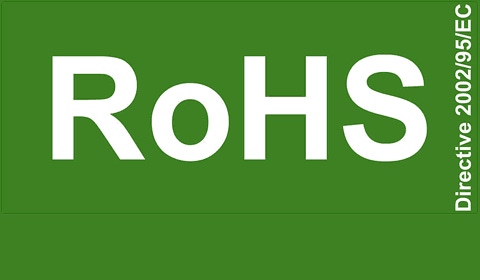The Restriction of Hazardous Substances (RoHS) directive, which aims to eliminate a number of hazardous substances from electrical and electronic equipment, has already come into effect for consumer device manufacturers in Europe. Medical device manufacturers looking to sell their products in Europe will have to comply with the law by July 2014. Similar legislation can also be anticipated in China, Japan, and North America.
January 29, 2013

 Most global consumer electronics makers changed their supply chain processes to comply with the Restriction of Hazardous Substances (RoHS) directive in July 2006. Many lessons and best practices learned from these changes can be offered to the medical device world. Medical device companies looking to sell their products in Europe must comply with the law by July 2014. Similar legislation can also be anticipated in China, Japan, and North America.
Most global consumer electronics makers changed their supply chain processes to comply with the Restriction of Hazardous Substances (RoHS) directive in July 2006. Many lessons and best practices learned from these changes can be offered to the medical device world. Medical device companies looking to sell their products in Europe must comply with the law by July 2014. Similar legislation can also be anticipated in China, Japan, and North America.
Medical device makers have much to gain by partnering with institutions that have demonstrated experience and expertise in RoHS implementation at the global level. By doing so, they can take advantage of the work that was already done by consumer electronics OEMs and tackle the new challenges unique to the healthcare technology industry. The sooner medical device manufacturers start redesigning their products and planning their go-to-market strategy, the more time they will have to perform all of their required testing and evaluations before the fast approaching deadline.
The first area of concern is supply-chain readiness.
Medical device manufacturers will not only need to understand their supply chain in a post-RoHS world, but also their ability to provide evidence of RoHS compliance for all of the components, parts, and materials they ship. This is a key lesson learned from the consumer electronics world and is an often overlooked issue for companies in their initial planning for RoHS compliance.
It is important to note that non-electronic peripheral items such as SKU numbering and packaging systems are often considered to be a part of the electronic device. For example, leather cases that exhibited residues of RoHS-regulated chemicals could have led to regulatory non-compliance for a product, if these trace amounts were not found through meticulous due diligence processes instituted by one high end mobile device manufacturer.
An oversight in this area can also lead to significant financial losses, due to product inventory seizures and fines.
A preview of this financial loss occurred while many consumer electronics manufacturers were ramping up their RoHS compliance efforts leading up to the 2006 deadline. The Netherlands, which had a regulation banning cadmium in place by 1999, seized millions of gaming consoles and accessory packs worth millions due to cadmium found in some of the cables.
These situations can be avoided by a comprehensive supply chain verification exercise that addresses all aspects of the product and its packaging, not just the electronic components. In medical products, serious attention needs to be paid to the enclosures, connectors, interconnects, accessories, and mechanical support devices.
More from Celestica: |
Component suppliers that are unique to the medical device field or to a related industry that has not yet been affected by RoHS will also need to be evaluated. These suppliers may not have the skills and the knowledge to demonstrate full RoHS compliancy. It is critical to understand how these suppliers separate compliant materials from non-compliant materials to ensure the correct inventory segregation and prevent these supplies from mixing.
Of course, this leads to another area of concern, which is, what happens after product material changes are made.
Consumer electronics manufacturers quickly learned that changing to lead-free component terminations —as well as interconnect solders—had a significant effect on the product’s reliability in the field. These material changes led to greater brittleness of the resultant interconnect and an overall more fragile product.
To overcome this technical challenge, consumer device manufacturers moved to implementation of modified solder formulations, ultimately resulting in improved reliability.
For many consumer electronics OEMs, RoHS compliance also signalled a shift in manufacturing culture. For the higher end consumer devices, the emphasis on brand protection in terms of product reliability and cost-to-performance ratio were always important throughout the transition to RoHS compliance.
Celestica has found that one positive benefit of the transition to RoHS compliant products was the improved electrical performance characteristics of some of the RoHS compliant printed wiring board laminate materials, as compared to their precursors designed for lower temperature processing using leaded solders.
It is important to begin the conversion process early to prevent stockpiles of non-compliant inventory, which would be deemed unusable after July 2014. Using a partner with global presence and expertise in RoHS compliance practices can help get the process started and ensure medical device manufacturers can perform the required testing and evaluations well before the RoHS deadline.
 Simin Bagheri, M.A.Sc., P.Eng. is the customer engagement lead for the engineering services division at Celestica Healthtech. She will be presenting this topic and the RoHS implications for materials selection in depth at MD&M West 2013 Conference, Feb. 11 – 14 in Anaheim, CA.
Simin Bagheri, M.A.Sc., P.Eng. is the customer engagement lead for the engineering services division at Celestica Healthtech. She will be presenting this topic and the RoHS implications for materials selection in depth at MD&M West 2013 Conference, Feb. 11 – 14 in Anaheim, CA.
You May Also Like


